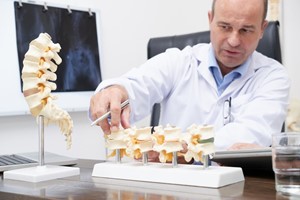In the realm of physical therapy, the human touch has long been considered irreplaceable. The nuanced understanding, adaptability, and communication skills of a skilled therapist are integral to guiding patients through their rehabilitation journey. However, the landscape of healthcare is evolving, with technological advancements offering new possibilities for enhancing patient care. Matthew Yarossi, a professor at Northeastern University specializing in electrical and computer engineering, physical therapy, movement, and rehabilitation sciences, sheds light on how artificial intelligence (AI) and robotic technologies are intersecting with traditional therapy practices to revolutionize treatment approaches.
Yarossi emphasizes the multifaceted nature of a physical therapist's role, describing it as a continuous "task dynamics loop" where therapists observe, react, provide feedback, motivate, and educate patients. While these human qualities remain indispensable, there is a growing recognition of the potential for AI and robotics to augment the therapeutic process by providing valuable data insights and facilitating targeted interventions.
One of the key contributions of AI and robotics lies in their ability to provide therapists with objective data regarding a patient's neuromuscular function. Through the utilization of VR headsets or robotic therapeutic devices, patients can receive real-time feedback on their movements without constant supervision. Concurrently, sensors integrated into these devices enable clinicians to monitor muscle activity and brain responses, offering a deeper understanding of the rehabilitation process beyond what is discernible to the naked eye or touch.
Moreover, advancements in brain stimulation technologies present new avenues for enhancing rehabilitation outcomes. By modulating electrical activity in the brain, therapists can tailor interventions to address specific neurological impairments or facilitate motor learning. This integration of AI-driven insights and targeted interventions holds promise for optimizing treatment plans and improving patient outcomes.
However, the integration of these technologies into clinical practice is not without challenges. Yarossi underscores the importance of efficiency and reliability in healthcare settings where time is often limited, and system downtime is not an option. The successful implementation of AI and robotic systems hinges on their usability, functionality, and seamless integration into existing workflows.
Looking to the future, Yarossi advocates for a collaborative approach involving diverse stakeholders, including computer scientists, AI experts, physicians, and physical therapists. By fostering interdisciplinary collaboration, healthcare professionals can harness the transformative potential of AI while ensuring that the human element remains central to patient care.
In conclusion, the convergence of AI and robotics with traditional physical therapy practices represents a paradigm shift in rehabilitation medicine. While the human touch remains paramount, technological innovations offer opportunities to enhance clinical decision-making, personalize treatment approaches, and improve patient outcomes. Through ongoing collaboration and innovation, the integration of AI and robotics into physical therapy holds the promise of a more efficient, effective, and patient-centered healthcare system.
news.northeastern.edu/ - Cesareo Contreras













